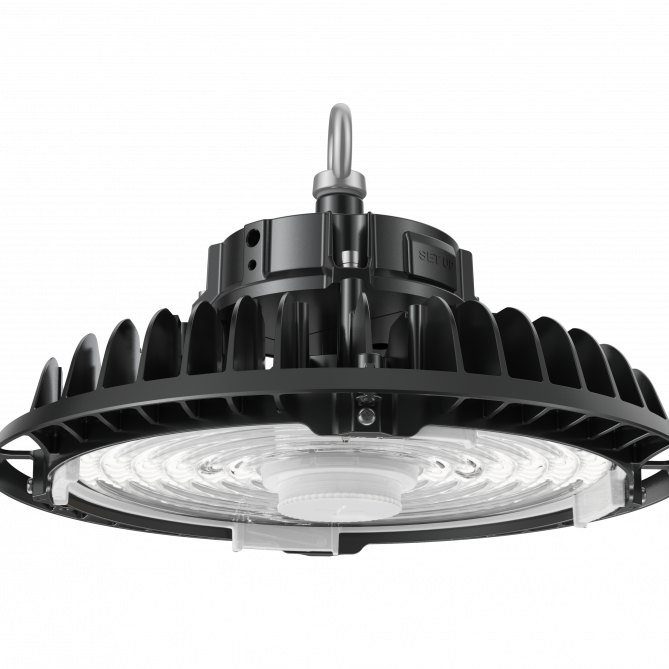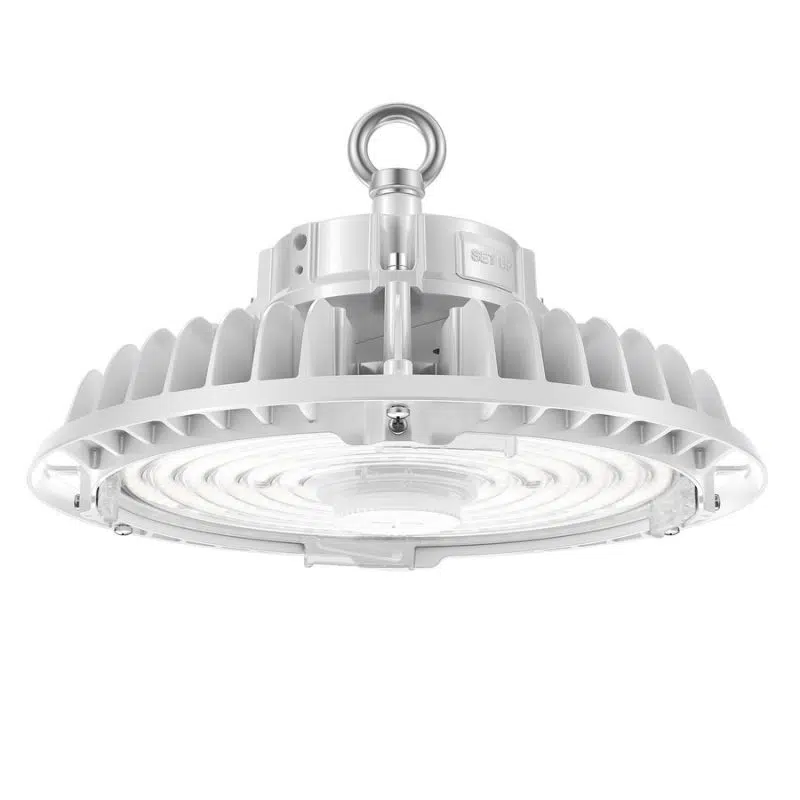Contents
- 1 Introduction to LED Lighting and Sustainability Concerns
- 2 Energy Efficiency: The Core Advantage of LEDs
- 3 Longevity and Reduced Waste: How LED Lifespans Impact the Environment
- 4 Addressing the Light Pollution Paradox of LED Technology
- 5 Manufacturing and Disposal: The Environmental Cost of LEDs
- 6 Innovative Solutions and The Future of LED Sustainability
- 7 Regional and Industry Efforts in LED Adoption
- 8 Balancing Act: Implementing LEDs While Protecting Health and Ecosystems
- 9 Conclusion: The Path Forward for Eco-Conscious Lighting
Introduction to LED Lighting and Sustainability Concerns
Led high bay lighting spacing calculator! In today’s eco-aware world, lighting faces scrutiny for its environmental impact. LED (Light Emitting Diode) lighting stands out, offering potential sustainability benefits. This advanced technology promises energy efficiency and longevity, unlike traditional bulbs.

However, concerns linger over LEDs and their total environmental footprint. This includes production processes and disposal methods. Light pollution is another pressing issue with LEDs, as they could disrupt ecosystems. In this exploration of LED lighting sustainability, we aim to debunk myths and present facts. We’ll evaluate the environmental pros and cons of using LED technology. The goal is to offer a balanced view of LEDs as a green option.
To understand this, we examine energy consumption, waste reduction, and potential harm to wildlife. We also discuss how manufacturing and discarding LEDs affect our planet. Lastly, we look at solutions and regulations shaping the future of this lighting tech. It’s crucial to weigh all aspects when considering LEDs for eco-friendly applications.
Energy Efficiency: The Core Advantage of LEDs
LED lighting stands out for its incredible energy efficiency. Unlike traditional bulbs, LEDs convert more electricity into light, leading to less waste. This conversion reduces the demand for energy. As a result, it cuts down on greenhouse gas emissions.
LEDs offer an efficiency of 80-100 lumens per watt, compared to just 15-20 for incandescent bulbs. This means they require less power to produce the same amount of light. Using less power translates to significant cost savings. It also slashes the carbon footprint of homes and businesses.
The energy-efficient nature of LED lighting also leads to lower utility bills. This makes LEDs a smart choice for those looking to save money and protect the planet. With rising energy costs, the savings potential of LEDs is more relevant than ever.
In addition, the compatibility of LEDs with renewable energy sources like solar panels is enhancing their sustainability. This combination can drive even more impressive reductions in CO2 emissions. Such integrations are gaining popularity among environmentally conscious consumers and businesses.
Efficiency advancements have made LEDs the preferred choice across various sectors. Whether it be residential, industrial, or commercial settings, the transition to LED lighting is ongoing. This shift promises a brighter, more sustainable future for our planet.
To wrap up, LED lighting’s energy efficiency is not only good for the environment but also benefits consumers. It significantly reduces the need for frequent bulb replacements and the associated material waste. LED lighting’s role in sustainability efforts remains one of its most compelling features. It’s a key factor in the global movement towards energy conservation and responsible resource use.

Longevity and Reduced Waste: How LED Lifespans Impact the Environment
Led high bay lighting spacing calculator! LED lights boast a longer life than traditional bulbs. This longevity means less frequent replacements. Fewer replacements reduce the waste that ends up in landfills. It lessens the demand for production. This equals to less resource use and pollution from manufacturing.
LED bulbs can last up to 25,000 to 50,000 hours. In comparison, incandescent bulbs last about 1,000 hours. This difference shows the sustainability of LEDs. Longer life spans mean fewer bulbs used over time. It also means savings in maintenance and replacement costs.
The production of fewer bulbs results in reduced emissions. The process of making any bulb requires energy and raw materials. With LEDs, this process is less frequent, reducing its environmental impact.
In terms of waste management, LED disposal is easier on the environment. LEDs do not contain mercury like CFLs do. This makes them safer to dispose of. Some LED components can be recycled. This minimizes the footprint of waste disposal.
In conclusion, LEDs present a chance to cut waste significantly. Their extended lifespans and recyclable parts help protect the planet. By choosing LEDs, consumers make an eco-friendly choice. They support a more sustainable future in lighting.
Addressing the Light Pollution Paradox of LED Technology
LED technology offers bright and efficient lighting. But it creates a light pollution paradox. Too much LED light can hide the night sky and disturb natural life cycles. This section explores LED light pollution and its impacts.
Understanding Light Pollution and Its Causes
Light pollution is excess artificial light. Urban areas often experience it. It comes from streetlights, billboards, and other sources. LED lights contribute to this with their intense brightness.
How LEDs Contribute to Light Pollution
LEDs emit powerful, bright light. This light often spreads beyond what is necessary. It can make urban skies glow. This glow affects our view of stars and impacts nocturnal wildlife.
Implications for Wildlife and Ecosystems
Light pollution disrupts animals and plants. It alters sleeping and feeding patterns in animals. It can also confuse migratory paths for birds. Plants can have disrupted growth cycles too.
Steps to Mitigate LED-Induced Light Pollution
To reduce LED light pollution, we must use light intelligently. We can design LEDs to minimize unwanted spill and glare. Shielding lights and lowering brightness levels at night can help. Regulations for responsible LED use can also guide cities and businesses.
So, while LED lighting is efficient, it is vital to address its role in light pollution. We can improve LED design and use to protect the night sky and support ecological balance.
Manufacturing and Disposal: The Environmental Cost of LEDs
While LED lights are a leader in energy efficiency, their manufacturing and disposal paths pose environmental dilemmas. Let’s delve into these aspects to understand their overall eco-footprint.

The Manufacturing Process and Its Challenges
Led high bay lighting spacing calculator! Producing LEDs involves materials that carry ecological baggage. Rare earth elements and other compounds are necessary for LED creation. Extracting these can lead to harmful environmental effects. Energy-intensive mining and chemical processes may cause soil and water pollution. While the output—a long-lasting, energy-saving bulb—is beneficial, the production process is not without its issues.
Waste Management and LED Disposal
LED lifespan surpasses many lighting technologies, which results in reduced waste generation. However, the end of life for LEDs still warrants attention. Unlike CFLs, LEDs don’t have mercury, making them safer to throw away. But, they include electronic parts that can hurt the environment if improperly discarded. These parts can accumulate in landfills, risking toxic leaks from substances like lead and cadmium. Proper recycling and waste solutions for LEDs are critical to curtailing environmental harm.
The Need for Improved Recycling Infrastructure
Current LED recycling measures are still evolving. Not all regions have the infrastructure to deal with LED disposal efficiently. Ensuring that LED lights are easy to recycle is key to diminishing their environmental impact. Enhancing the systems for LED bulb recycling can turn potential waste into valuable resources again. It’s crucial to invest in and adopt take-back programs and create products that consider the entire lifecycle.
In summary, LED lights present a mixed bag when it comes to environmental costs. The production process could be more eco-friendly and disposal challenges need addressing. Still, their energy savings and longevity outweigh many of the negatives. It’s a balance of making the best of LED benefits while minimizing the drawbacks through innovative solutions.
Innovative Solutions and The Future of LED Sustainability
The future of LED lighting looks promising with innovative solutions on the horizon. New technology advancements aim to tackle the challenges linked with LED sustainability. Here are key areas of focus for the LED industry moving forward.
Advancing Production Techniques
Efforts are underway to refine how LEDs are made. Striving for greener manufacturing processes, the industry targets reducing ecological impacts. This includes less reliance on harmful substances and more sustainable resource use.
Enhancing Recycling Systems
Improving LED recycling is vital for our environment. The goal is to make it easier to reuse and repurpose LED components. This could cut down on e-waste and prevent harmful materials from reaching landfills.
Developing Next-Gen LEDs
Scientists and engineers work on new LED designs. These designs could offer the same benefits while minimizing negative effects. For example, they might reduce blue light or use even less energy.
Promoting Eco-Friendly Usage
Promotion of LEDs that are environmentally friendly is picking up pace. With better consumer information and programs that take back old bulbs, LEDs can be part of a more eco-conscious living.
Legislate and Innovate
New regulations can push the industry towards more sustainability. Governments and businesses may introduce standards to encourage the adoption of eco-friendly LEDs.
LED technology continues to evolve with sustainability in mind. It holds promise for even greater environmental benefits in the future. These innovative solutions and proactive steps can help ensure LED lighting remains a top eco-friendly choice.
Regional and Industry Efforts in LED Adoption
Led high bay lighting spacing calculator! Around the world, regions and industries are making strides in adopting LED lighting. This commitment to LED technology is driven by the desire to reduce energy consumption and shrink environmental footprints. Here are examples of regional and industry movements towards LED adoption:
Leading Countries in LED Shift
- China stands at the forefront, being the largest LED producer and consumer.
- The United States benefits from Department of Energy initiatives that support LED transitions.
- The European Union enforces strict energy regulations, hastening the switch to LEDs.
- Japan sees rapid growth in LED innovations, expanding into a variety of applications.
Industries Embracing LED Lights
- The industrial sector sees vast potential, with LEDs potentially cutting millions in carbon emissions.
- Commercial businesses switch to LED to shrink costs and boost sustainability.
- In residential areas, LED bulbs are becoming the norm, thanks to lower energy bills and longer lifespans.
The Impact on Sustainability
Replacing traditional bulbs with LEDs has a substantial effect:
- Energy use for lighting drops, contributing to decreased CO2 emissions.
- Fewer bulbs in landfills mean a reduction in electronic waste.
- The demand for new material production lowers, lessening the strain on natural resources.
Enhancing LED Technology and Recycling
Efforts are in progress to improve LED technology and its recyclability:
- More eco-friendly production methods are being developed.
- Strategies for better recycling infrastructure are being implemented.
These advancements aim to sustain the positive environmental trends set by LED lighting adoption. Each step in this direction solidifies LEDs as a cornerstone of future lighting solutions. Regional and industry-wide adoption of LED lighting represents a substantial commitment to environmental stewardship and sustainable development.
Balancing Act: Implementing LEDs While Protecting Health and Ecosystems
Transforming our lighting to LEDs offers great advantages for energy efficiency and sustainability. But we need to balance that with health and ecosystem protection. Here’s how:
Understanding the Health Impacts of LED Lighting
Not all LED lights are equal. Some emit blue light that can disrupt sleep. It’s important to choose LEDs with warmer tones for night use. This helps protect our body’s natural rhythms.
Safeguarding Wildlife and Natural Habitats
Bright LED lights can confuse animals at night. To prevent this, we can use LEDs with shields. These direct the light downward, reducing its spread into the sky.
Promoting Eco-Friendly LED Production
To make LEDs, we need resources that can harm the environment. We can push for better ways to make LEDs. This means using less harmful materials and making production cleaner.
Encouraging Responsible Disposal and Recycling
When LEDs stop working, they need proper disposal. We can all help by recycling old LEDs. Many parts of LED lights can be used again. This cuts down on waste and saves resources.
Supporting Government and Industry Initiatives
Governments and industries can make a big difference in LED use. Laws and programs that support eco-friendly LEDs help everyone. They make sure we use LEDs properly and safely.
By making smart choices, we can enjoy the benefits of LEDs. We’ll save energy, reduce waste, and help the planet. At the same time, we’ll take care of our health and the world around us.
Conclusion: The Path Forward for Eco-Conscious Lighting
As we reach the end of our exploration, we acknowledge the complexities of LED lighting sustainability. Despite the challenges in production and disposal, LED lights offer undeniable environmental benefits. They are energy-efficient, have a long lifespan, and contribute meaningfully to reduced waste.
Urban areas and industries worldwide are embracing LEDs. They shift away from less eco-friendly bulbs to meet stringent regulations and sustainability goals. The positive impact is clear: lower energy consumption, diminished electronic waste, and reduced carbon emissions.
However, we must also consider the potential for light pollution and its effects on health and ecosystems. Smart design and regulation are the key. They ensure that while we benefit from LED lighting, we do not harm our environment or well-being.
The road ahead requires a balance. We must continue to innovate and improve LEDs while promoting responsible use. Recycling programs must expand and become more accessible to minimize electronic waste. We encourage eco-friendly production practices and disposal methods to protect our planet.
As informed consumers, we play a critical role. We can choose LEDs that minimize blue light exposure and select products with a lower environmental impact. By doing so, we not only save on energy costs but also join the global effort to protect our environment.
LED lighting is an important step towards an eco-conscious future. With ongoing advancements and a commitment to sustainability, we can light our world responsibly. Let’s work together to make eco-friendly lighting the standard, not the exception.


